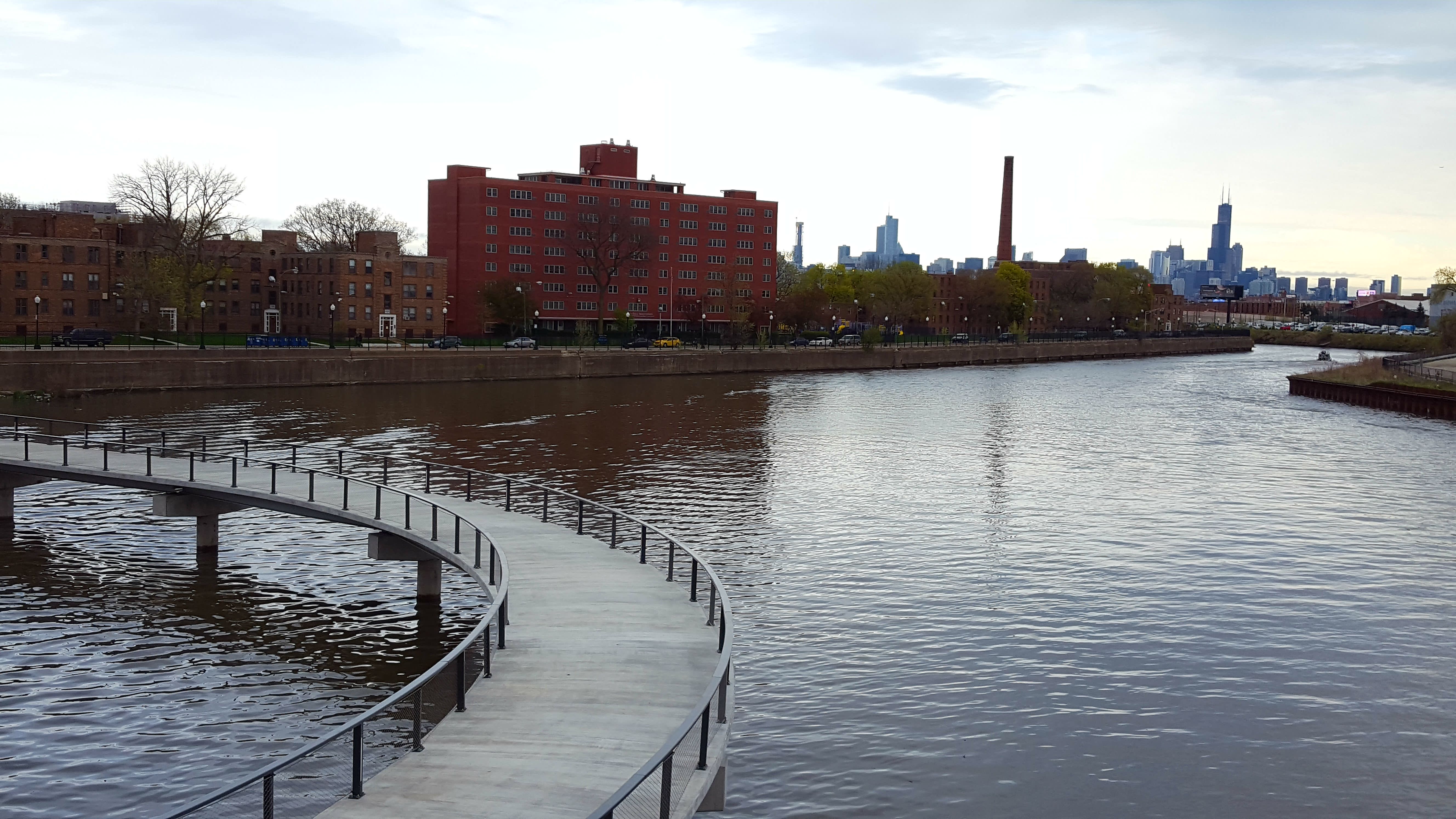Did You Know?
Connecting the 312 RiverRun to Lathrop Homes trail

As exciting as it is to see new trails emerging along the Chicago River, it’s important to keep in mind that trails return the greatest public benefits when they are connected, linking people to jobs, shopping districts and recreational opportunities.
One area that offers a prime opportunity to connect trails is from the end of the 312 RiverRun Trail at Belmont Avenue south to the path at Lathrop Homes (pictured), a housing development that runs north and south of Diversey Avenue.
Adding a trail along this one-mile stretch of the river would create a continuous path from Diversey Avenue north to Lawrence Avenue.
To build momentum for this connection, we’ve recently started facilitating a community-led project that’ll develop a vision for connecting these trails.
The project is part of our campaign for a 27-mile continuous Chicago River Trail. As Chicagoans demand more off-street trails, opportunities exist to leverage ongoing development near the river and create trails that benefits communities all along the river and across Chicago.
Helping us carry out the project are the Bill and Linda Gantz Boys and Girls Club near Lathrop Homes, a neighborhood-based organization that promotes healthy lifestyles, and Port Urbanism, an architectural firm with expertise in riverfront design. Alongside these partners, we’re working with an advisory committee of more than twenty neighborhood stakeholders and residents.
It’s an important time to develop concepts for a connection between Belmont and Diversey Avenues. Developer Related Midwest will complete the trail at Lathrop Homes in 2019; the City of Chicago is on track to finish the 312 RiverRun Trail in the summer of 2020.
In addition, the Chicago Department of Transportation recently completed the Manor Neighborhood Greenway, providing an on-street connection between Lawrence and Montrose Avenues. Further south, plans for Lincoln Yards include separated riverfront paths from Webster to North Avenues, and the Wild Mile Chicago features trails between North and Chicago Avenues.
What are the next steps and how can you get involved?
We’re planning to conduct a variety of activities to collect public input as well as observational data in the study area starting in May until the project concludes in September. Stay tuned for the release of an online project survey in May as well as opportunities to learn more about the project at neighborhood events.
Individuals and organizations interested in participating in the project can contact Steve Simmons, 312.216.0472, steve@activetrans.org.
If you haven’t already, please join our campaign for a continuous Chicago River Trail.
Make a Donation
Your tax-deductible donation supports the important work that Active Trans does throughout the region
